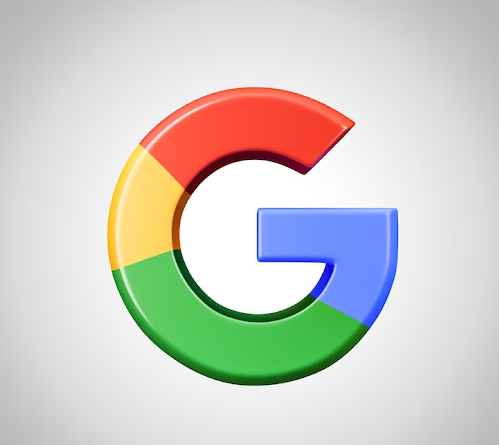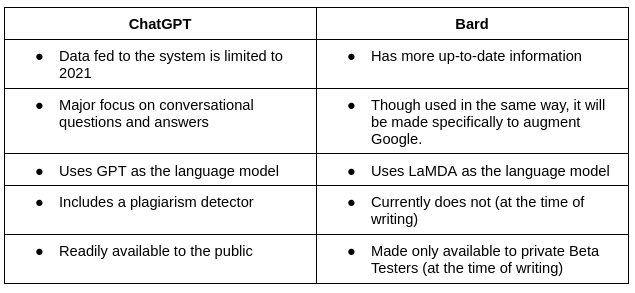Let's Discuss
Enquire NowSo the world is hooked on ChatGPT. Here’s what Google has to say about it.
Google Bard, the latest addition to Google’s tech arsenal, is a newly launched chatbot tool that uses natural language processing and machine learning to make realistic conversations with humans and provide helpful responses to queries much like ChatGPT.

Overview
Though a new addition to the market, The development of a conversational AI model began about a year ago with Google’s release of LaMDA 2 (Language Model for Dialogue Applications). In addition, Bard is built on top of Google’s Transformer neural network architecture, which served as the foundation for other AI generative tools like ChatGPT’s GPT-3 language model. After Microsoft announced its collaboration with OpenAI and the integration of ChatGPT into Microsoft Bing, which would inevitably compete with Google Search, the idea for Bard was presented on Google’s ‘Live from Paris’ event. Bard was officially unveiled on February 6 in a statement from Google CEO Sundar Pichai.
However, not all went well for Bard as it ended by facing a rocky start which cost Google $100 billion in market value. In the promotional video, when the AI tool was asked “What new discoveries from the James Webb Space Telescope [JWST] can I tell my 9-year-old about?”, Bard responded that JWST captured the “very first pictures” of an exoplanet outside of our solar system. However, according to NASA, the first image of an exoplanet was taken by the European Southern Observatory’s Very Large Telescope in 2004.
What sets these language models like Bard and ChatGPT apart?
Unlike traditional chatbots, which typically rely on a set of predefined responses and decision trees, Bard and ChatGPT use machine learning and natural language processing algorithms to generate responses based on the input it receives from the user. This means that they are not limited to a fixed set of responses and can adapt to the specific needs of the user.
Additionally, they are also capable of generating coherent and contextually appropriate responses that can emulate human-like conversation. It can also understand the intent behind the user’s questions, allowing it to produce more accurate and helpful responses and explain them like a human.
ChatGPT vs Bard
Although Google’s Bard and OpenAI’s ChatGPT are similar in their functioning, there are a few key features that set them apart.

Conclusion
Google Bard is yet another impressive demonstration of the capabilities of natural language processing and artificial intelligence. With technologies like Bard and GPT, we are witnessing a new era of human-machine interaction, where AI can supplement and enhance human capabilities, leading to more productive and creative collaborations. As this technology becomes more widely available and accessible, we can expect to see more innovation and breakthroughs in fields such as music, literature, education, and entertainment.
Ideas for innovative projects buzzing in your mind? We can be the best development partner. Connect with us here to start something great!
Disclaimer: The opinions expressed in this article are those of the author(s) and do not necessarily reflect the positions of Dexlock.



